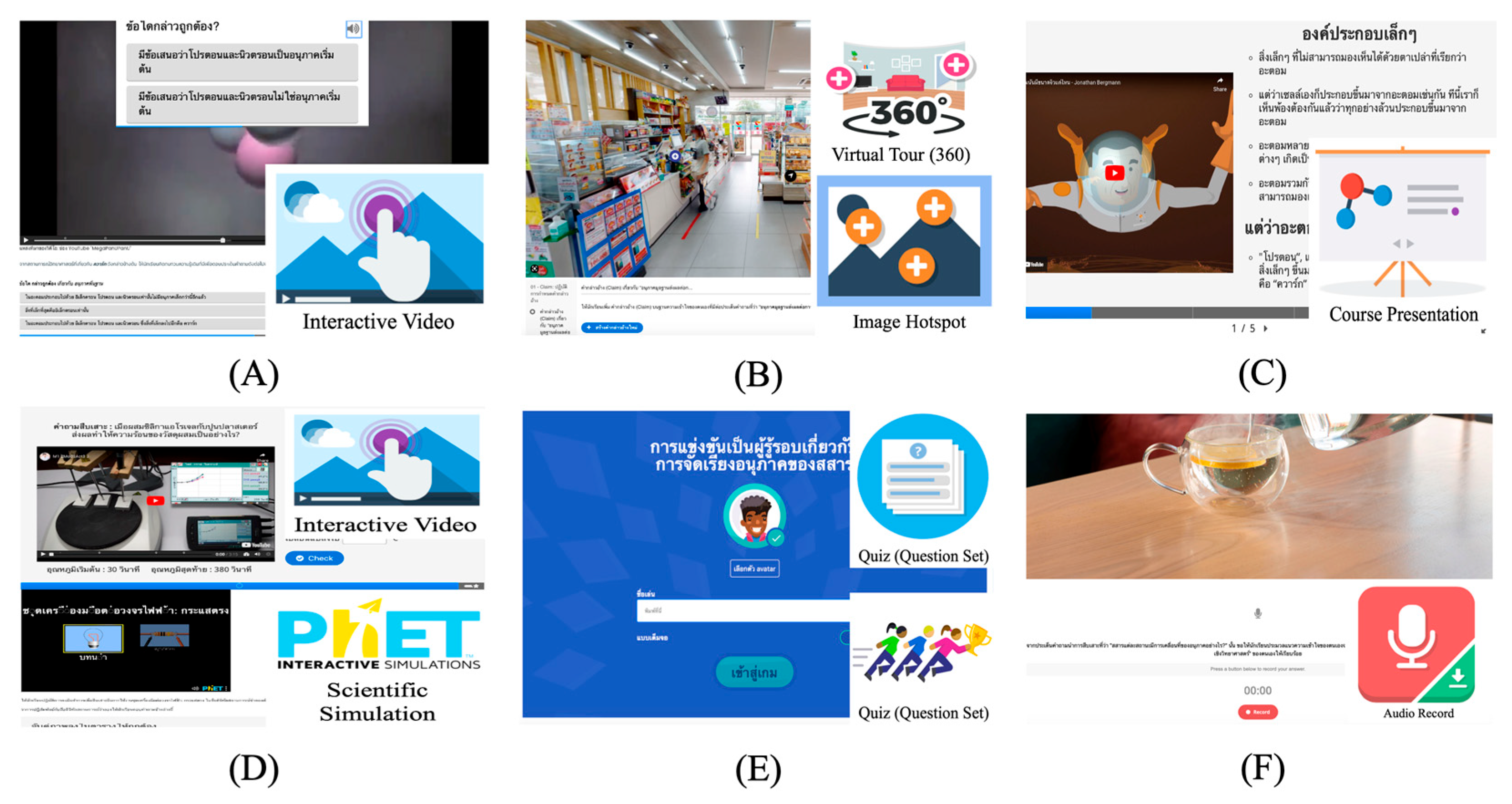Design and Development of Interactive Moodle-Based E-Learning Platform for Competency Training †
Abstract
:1. Introduction
2. Literature Review
2.1. LMS
2.2. HCD
2.3. Self-Regulated Learning (SRL)
3. Design and Development
3.1. Human-Made Learning to Engine-Driven Online Learning
3.2. Interactive Moodle-Based E-Learning Platform
4. Conclusions
Author Contributions
Funding
Institutional Review Board Statement
Informed Consent Statement
Data Availability Statement
Acknowledgments
Conflicts of Interest
References
- Chaw, L.Y.; Tang, C.M. What Makes Learning Management Systems Effective for Learning. J. Educ. Technol. 2018, 47, 152–169. [Google Scholar] [CrossRef]
- Meyliana, H.A.E.; Widjaja, S.W.; Fernando, S.E.; Condrobimo, A.R. Improving the Quality of Learning Management System (LMS) based on Student UTAUT2 and Trust Perspectives Using Model. In Proceedings of the 4th International Conference on Informatics and Computational Sciences, Semarang, Indonesia, 10–11 November 2020. [Google Scholar]
- Zoltowski, C.B.; Oakes, W.C.; Cardella, M.E. Students’ ways of experiencing human-centered design. J. Eng. Educ. 2012, 101, 28–59. [Google Scholar] [CrossRef]
- Dickrell, P.; Virguez, L. Engineering Design & Society: A First-Year Course Teaching Human-Centered Design. In Proceedings of the 2018 World Engineering Education Forum—Global Engineering Deans Council (WEEF-GEDC), Albuquerque, NM, USA, 12–16 November 2018. [Google Scholar]
- Michalsky, T.; Schechter, C. Preservice teachers’ capacity to teach self-regulated learning: Integrating learning from problems and learning from successes. Teach. Teach. Educ. 2013, 30, 60–73. [Google Scholar] [CrossRef]
- Ingkavara, T.; Panjaburee, P.; Srisawasdi, N.; Sajjapanroj, S. The use of a personalized learning approach to implementing self-regulated online learning. Comput. Educ. Artif. Intell. 2022, 3, 100086. [Google Scholar] [CrossRef]
- Chaipidech, P.; Srisawasdi, N.; Kajornmanee, T.; Chaipah, K. A personalized learning system-supported professional training model for teachers’ TPACK development. Comput. Educ. Artif. Intell. 2022, 3, 100064. [Google Scholar] [CrossRef]
- Lai, C.L.; Hwang, G.J. A self-regulated flipped classroom approach to improving students’ learning performance in a mathematics course. Comput. Educ. 2016, 100, 126–140. [Google Scholar] [CrossRef]


Disclaimer/Publisher’s Note: The statements, opinions and data contained in all publications are solely those of the individual author(s) and contributor(s) and not of MDPI and/or the editor(s). MDPI and/or the editor(s) disclaim responsibility for any injury to people or property resulting from any ideas, methods, instructions or products referred to in the content. |
© 2023 by the authors. Licensee MDPI, Basel, Switzerland. This article is an open access article distributed under the terms and conditions of the Creative Commons Attribution (CC BY) license (https://creativecommons.org/licenses/by/4.0/).
Share and Cite
Muangbangyung, S.; Srisawasdi, N. Design and Development of Interactive Moodle-Based E-Learning Platform for Competency Training. Eng. Proc. 2023, 38, 11. https://doi.org/10.3390/engproc2023038011
Muangbangyung S, Srisawasdi N. Design and Development of Interactive Moodle-Based E-Learning Platform for Competency Training. Engineering Proceedings. 2023; 38(1):11. https://doi.org/10.3390/engproc2023038011
Chicago/Turabian StyleMuangbangyung, Sakkarach, and Niwat Srisawasdi. 2023. "Design and Development of Interactive Moodle-Based E-Learning Platform for Competency Training" Engineering Proceedings 38, no. 1: 11. https://doi.org/10.3390/engproc2023038011
APA StyleMuangbangyung, S., & Srisawasdi, N. (2023). Design and Development of Interactive Moodle-Based E-Learning Platform for Competency Training. Engineering Proceedings, 38(1), 11. https://doi.org/10.3390/engproc2023038011





